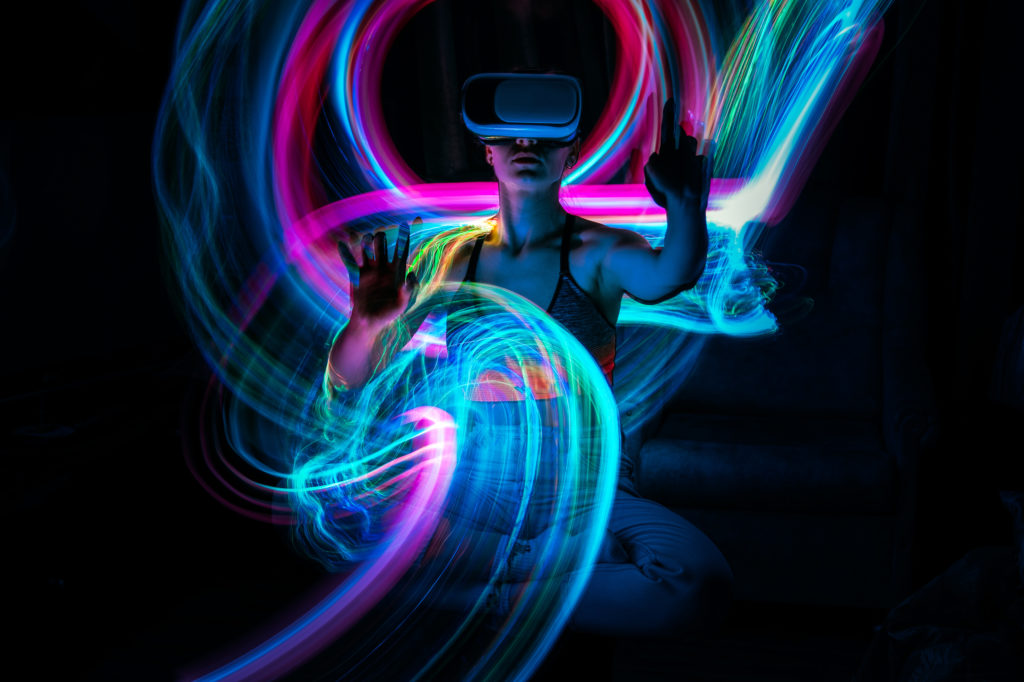This Los Angeles is different from the one we know. It’s not even part of the United States anymore. The world has experienced an economic collapse. Governments have collapsed while retaining only illusory power. Private organizations and large corporations rule. In this miserable world, Hiro Protagonist, devoid of prospects, is a hacker and pizza, a delivery boy. But Hiro has another world. A virtual world. The Metaverse, where – as an avatar – he becomes a real warrior prince. In this world, people-avatars interact with each other and use also digital currency.
The New World – The Old World of the Metaverse
This world is a product of Neal Stephenson’s imagination in his dystopian science fiction novel Snow Crash, published in 1992. After 30 years, its metaverse is finding many supporters, led by Mark Zuckerberg. By renaming Facebook to Meta, he would like to make his presence in the metaverse, clear.

In the virtual world we will use technologies such as virtual reality (VR), augmented reality (AR).Later this year Zuckerberg wants to spend $10 billion on developing his vision of this world. This is just the beginning because the evolution of the internet, and developing a metaverse world is considered such, will be extremely expensive.
The virtual world, imitating the physicality of the real world we live in, will also include all the key aspects of our presence in it. In doing so, we will use technologies such as virtual reality (VR), augmented reality (AR), artificial intelligence, social media, and digital currency.
What will we gain from the metaverse?
Full interactivity will enable us to build experiences. As virtual characters, we will communicate and interact with other users of the metaverse. This is already happening today. In the digital world, we communicate through games, shopping, or NFT. Interoperability in every form, including economic. The idea of the metaverse is to give us the ability to move avatars and their assets between environments.
Jon Radoff’s Metaverse value chain
According to Jon Radoff, CEO of Beamable.com, a live gaming platform – the metaverse is a trillion-dollar investment market (Goldman Sachs estimates the value of the metaverse at $12 trillion).
Radoff described its value chain in seven layers.
Experience – this is the layer that most companies and individuals are focusing on today. Users interact with the digital environment through various content and values already present in our lives. Such as the previously mentioned online games and shopping.
Discovery – the layer is about the push and pull process that brings people into new experiences. This is a vast ecosystem and one of the most profitable for companies.
Creator economy – refers to the technologies used by makers – tools and applications without the need for coding – to create people’s experiences in the metaverse.
Spatial computing – we can connect the virtual world with the physical world through AR, VR, and geospatial mapping technologies.
Decentralization – metaverse development is more dynamic when systems are interoperable and built within competitive markets. This gives developers sovereignty over the disposition of their data and creations.
Human interface – hardware that will make the digital world more personal to us, more tangible to us, and allow us to gather information about our surroundings, use maps or create shared AR experiences.
Infrastructure – will include the technology that enables our devices, connects them to the network, and delivers content.
Healthcare in the metaverse space
Among the many areas that will become an important part of the metaverse will be healthcare. With all of its technical background. A topic was particularly close to DevOpsi. Most of us have gained unique knowledge and experience in implementing complex, IT-based e-health projects, e.g. in the e-Health Center. Today it is hard to imagine the functioning of the Polish health care system without the results of this work. Our contribution includes, among others, the architecture of e-prescription and cross-border prescription systems.
There will be more and more talk about the place of healthcare in filling the metaverse space.
Accenture, in its „Accenture Digital Health Technology Vision 2022” report highlights:
– The internet is being reimagined, and healthcare enterprises need to be ready for what comes next. Metaverse and Web3 innovations are transforming the underpinning and operation of the virtual world. Instead of the internet as a disparate collection of sites and apps, the metaverse is a 3D environment in which moving from work to a social platform can be as seamless as walking from one’s car right into the doctor’s office.
Positive virtualization
– More than 80% of healthcare leaders see the metaverse having a positive impact on the future. In the metaverse, we can transcend time and space to simulate interactions, shorten learning cycles, and practice procedures, such as in surgical training. We can create distinct experiences for patients that replicate the physical world but remove its constraints. We can help healthcare employees build empathy around the human experience of people aging or of people with historically underserved needs by virtually living in other people’s shoes – the Accenture report says.
What might healthcare in the metaverse era look like in practice? What are the challenges for Software Houses that specialize in providing solutions for this particular area? Read in the next posts on our blog. We will return to this topic regularly.

